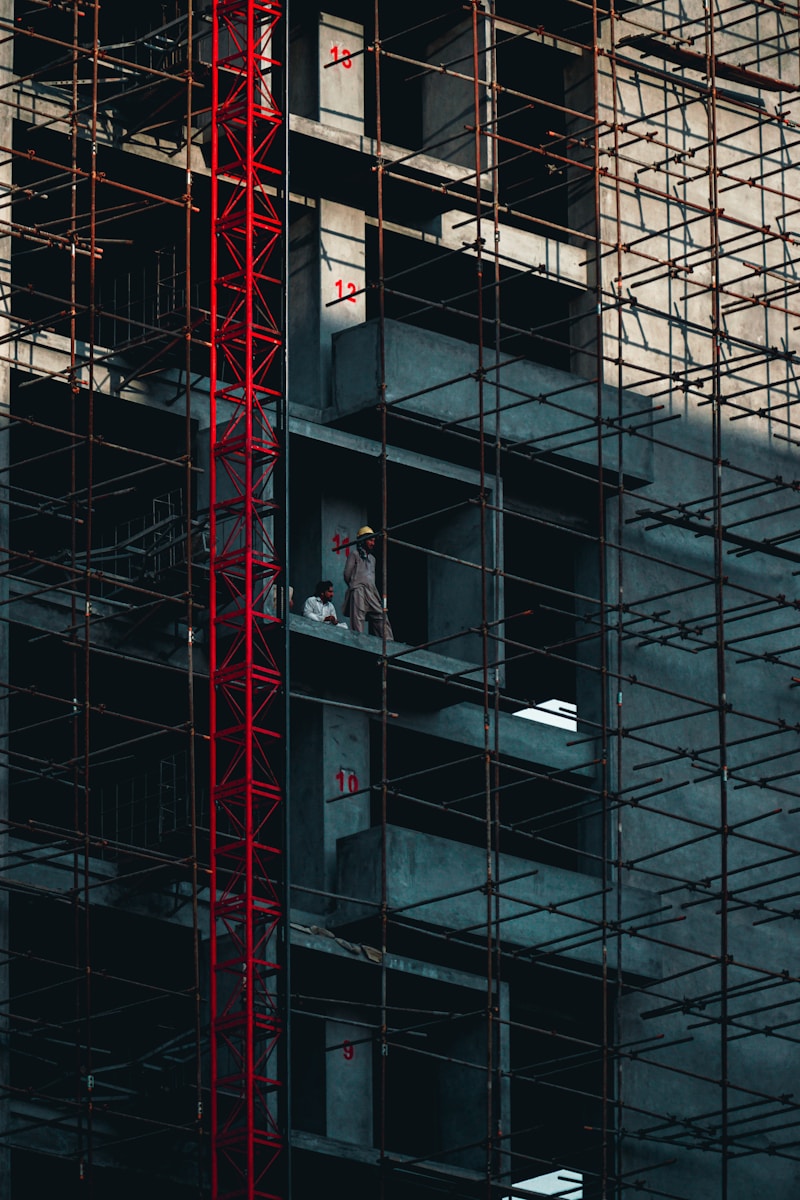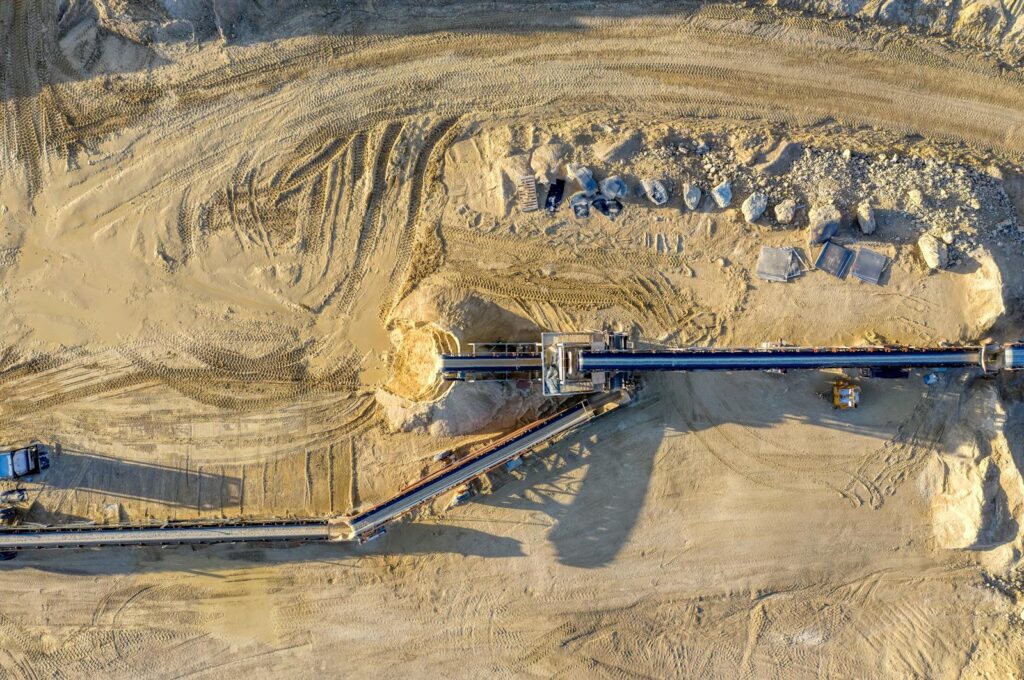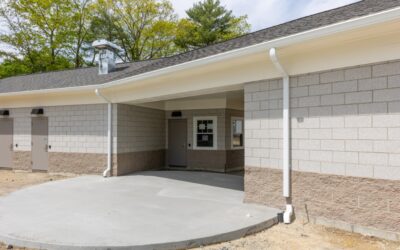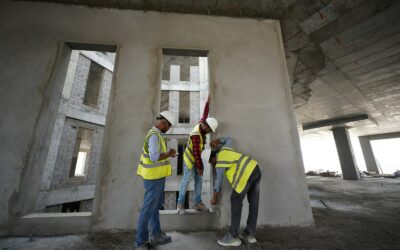Commercial construction drives business growth across every industry. From retail spaces that welcome customers to office buildings that house growing teams, the spaces we build directly impact how businesses operate and succeed.
Complex projects, in particular, require careful coordination and the strategic allocation of resources to ensure every aspect is managed efficiently. Yet many commercial real estate developers still rely on outdated construction methods that create friction, delays, and budget overruns.
The solution lies in understanding not just what commercial construction entails, but how the right approach can transform your project outcomes. While traditional construction methods pit architects against builders, the design-build methodology creates a unified team focused on your success.
Commercial construction encompasses far more than putting up walls and installing systems. It requires strategic planning, expert coordination, and seamless execution across multiple phases.
Our commitment to excellence and integrity ensures that every commercial construction project is delivered to the highest standards, building trust and lasting value for our clients. When done right, it delivers spaces that enhance productivity, attract customers, and generate strong returns on investment.
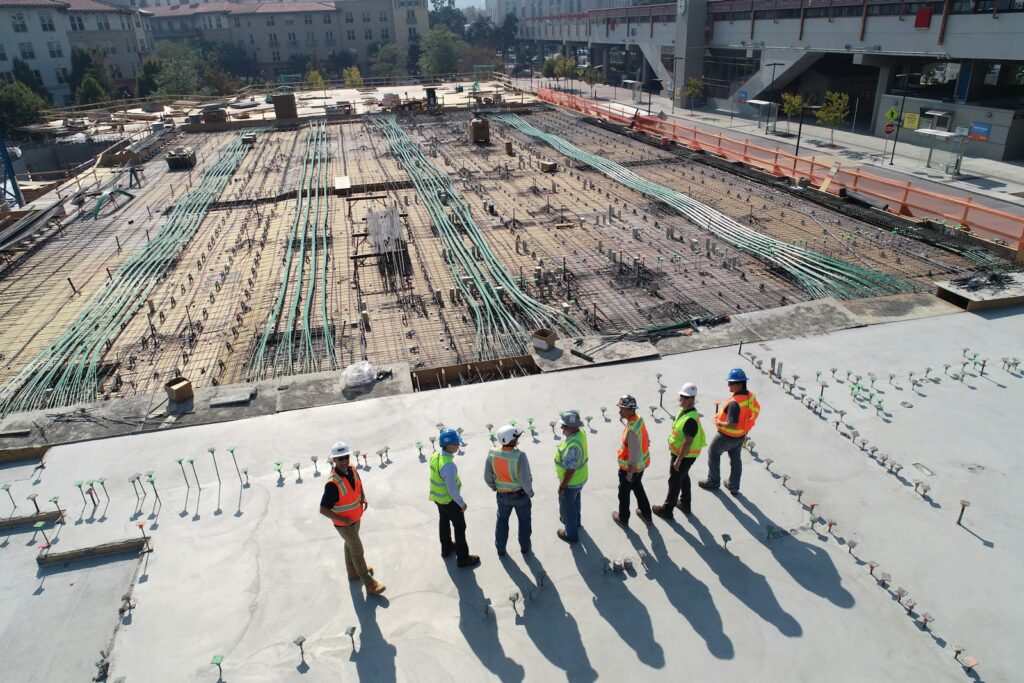
Photo by Scott Blake on Unsplash
Understanding the Four Types of Construction
Commercial construction represents one of four distinct construction categories, each serving different purposes and requiring specialized expertise.
Residential Construction
Residential construction focuses on homes, apartments, and condominiums where people live. These projects prioritize comfort, energy efficiency, and lifestyle needs.
Commercial Construction
Commercial construction creates spaces where businesses operate and customers engage. This includes office buildings, retail centers, restaurants, healthcare facilities, and hospitality venues. Commercial construction serves a wide range of industries, such as healthcare, hospitality, retail, and finance, each with unique requirements.
Commercial projects must balance functionality with aesthetics while meeting strict safety and accessibility requirements. Examples of commercial construction projects include small-scale retail remodels, mid-size office buildings, and large-scale hotel developments.
Industrial Construction
Industrial construction builds facilities for manufacturing, warehousing, and production. These large-scale projects require specialized knowledge of heavy equipment, utility systems, and operational workflows.
Infrastructure Construction
Infrastructure construction develops public works projects like roads, bridges, airports, and utilities that support entire communities.
Each type demands different skills, regulations, and project management approaches. Commercial construction sits at the intersection of technical complexity and business functionality, making the right construction partner essential for success.
Designing and constructing safe, durable structures is critical to ensuring the long-term integrity and performance of commercial buildings.
The Commercial Construction Process: Three Critical Phases
Every successful commercial construction project moves through three interconnected phases, each requiring careful attention and expert management.
It is crucial to have all key professionals involved early in the process, including architects, engineers, and contractors, to ensure effective coordination and better project outcomes. Strategic planning and coordination throughout these phases help achieve successful project outcomes.
Pre-Construction Phase: Foundation for Success
The pre-construction phase determines whether your project will succeed or struggle. This development and planning phase involves site analysis, soil testing, permit acquisition, and detailed budget development.
Evaluating land attributes such as zoning, soil quality, and location is crucial during pre-construction, as these factors directly affect site selection and preparation. Comparing different locations helps determine the best site for your project, impacting project planning, costs, and regulatory compliance. Smart developers invest heavily in this planning phase because thorough preparation prevents costly surprises later.
During pre-construction, the project team establishes clear goals, identifies potential challenges, and creates realistic timelines. This phase also includes value engineering sessions where designers and builders collaborate to optimize both cost and functionality.
Design Phase: Bridging Vision and Reality
The design phase is where a commercial construction project truly begins to take shape, transforming a client’s vision into a detailed, actionable plan. During this critical stage of the commercial construction process, the project team—including architects, engineers, and designers—works closely with the client to understand their goals, expectations, and budget.
Through a series of collaborative meetings and workshops, the team develops comprehensive plans and specifications that serve as the blueprint for the entire construction phase.
This phase involves more than just drawing up plans; it requires careful site analysis, creative problem-solving, and a deep understanding of how the building will function for its intended use. By leveraging the expertise of each team member, the design phase ensures that every aspect of the building—from layout and materials to systems integration—aligns with the client’s vision and operational needs.
Effective communication and coordination are essential, allowing the project team to address challenges early and ensure a seamless transition into construction. Ultimately, a well-executed design phase lays the groundwork for a successful commercial construction project, setting clear expectations and providing a roadmap for the rest of the process.
Construction Phase: Execution and Management
Once construction begins, success depends on coordination between multiple trades, suppliers, and specialists. The construction manager oversees daily operations, ensures quality standards, and maintains safety protocols across the job site.
The contractor plays a crucial role in daily project management, procurement, site inspection, and ensuring the project is completed on time, safely, and to the highest quality standards.
Modern commercial construction projects require sophisticated scheduling to coordinate electrical, plumbing, HVAC, and other building systems. Some companies self-perform key construction tasks, such as electrical or carpentry work, to maintain quality and control throughout the process.
Constructing a strong structure is essential, as it provides the necessary support and integrity for the building, ensuring long-term safety and influencing design choices. Delays in one area can cascade through the entire project, making strong construction management essential.
Post-Construction Phase: Completion and Handover
The post-construction phase includes final inspections, punch list completion, and system commissioning. During this stage, the architect issues the certificate of substantial completion, conducts building inspections, and ensures legal compliance and safety before occupancy.
It is crucial to thoroughly complete all project tasks and documentation to deliver a fully finished, operational building before handover to the client. Once all inspections are passed, the business can begin working in the new space. Quality construction companies also provide ongoing support and warranty services to protect your investment.
Real-World Success: The Residence at Great Woods
This project serves as an example of successful commercial construction by South Coast Improvement. Their work on The Residence at Great Woods demonstrates how expert commercial construction creates lasting value. This senior living facility project earned recognition from the Design-Build Institute of America with a 2022 Bronze Award for Building Construction.
The project showcased streamlined project delivery through integrated design and construction services. By managing both design and construction under one roof, South Coast eliminated the typical conflicts between architects and builders that often leave clients caught in the middle.
The success of this example project highlights how proper commercial construction management delivers exceptional results while maintaining budget control and timeline adherence. This approach has helped South Coast maintain a 90% repeat business rate since 1990.
The lessons learned from this project can be applied to planning and managing your next project, helping to streamline operations and ensure continued success.
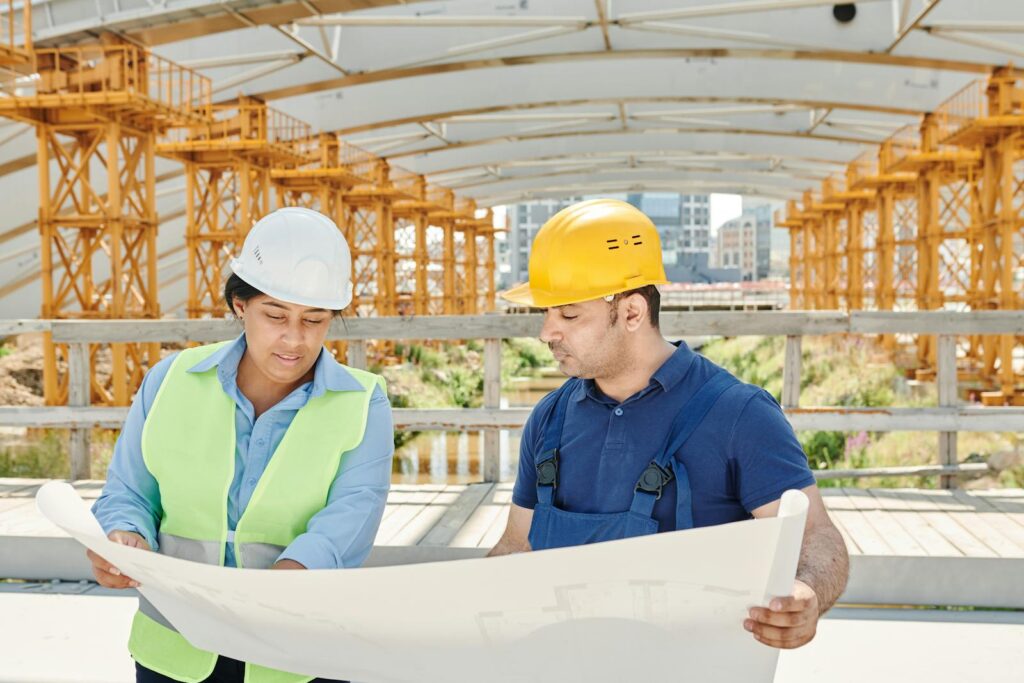
Photo by Mikael Blomkvist on Pexels
Earning Potential in Commercial Construction
Commercial construction offers strong career opportunities across multiple roles. Construction managers in commercial projects typically earn between $85,000 and $140,000 annually, while project managers can command $90,000 to $160,000 depending on experience and project scope.
The field rewards both technical expertise and business acumen. Successful professionals understand building codes, project management software, safety regulations, and client relationship management. This combination of skills makes experienced commercial construction professionals highly valuable in the marketplace.
Skilled trades workers in commercial construction also enjoy strong earning potential, with electricians, plumbers, and HVAC technicians often earning premium rates on large-scale commercial projects. Repairs and renovations are also common career paths within commercial construction, especially for those specializing in maintaining and upgrading existing buildings.
The Design-Build Approach: A Streamlined Solution
Traditional construction methods create an inherent conflict between design and construction teams. Architects develop plans in isolation, then hand them to builders who must interpret and execute someone else’s vision. This separation often leads to communication breakdowns, cost overruns, and timeline delays.
The design-build approach eliminates this disconnect by integrating design and construction services under single-source accountability. One team handles everything from initial concept through project completion, creating seamless communication and shared responsibility for outcomes.
This methodology allows simultaneous design and construction activities, accelerating project schedules compared to linear traditional approaches. Design-build teams can identify long-lead items early, develop strategic procurement packages, and create detailed construction schedules that prevent unforeseen costs and delays. The procurement phase is crucial during this process, as it involves ordering materials, managing vendors, and ensuring clear communication to prevent delays and cost overruns.
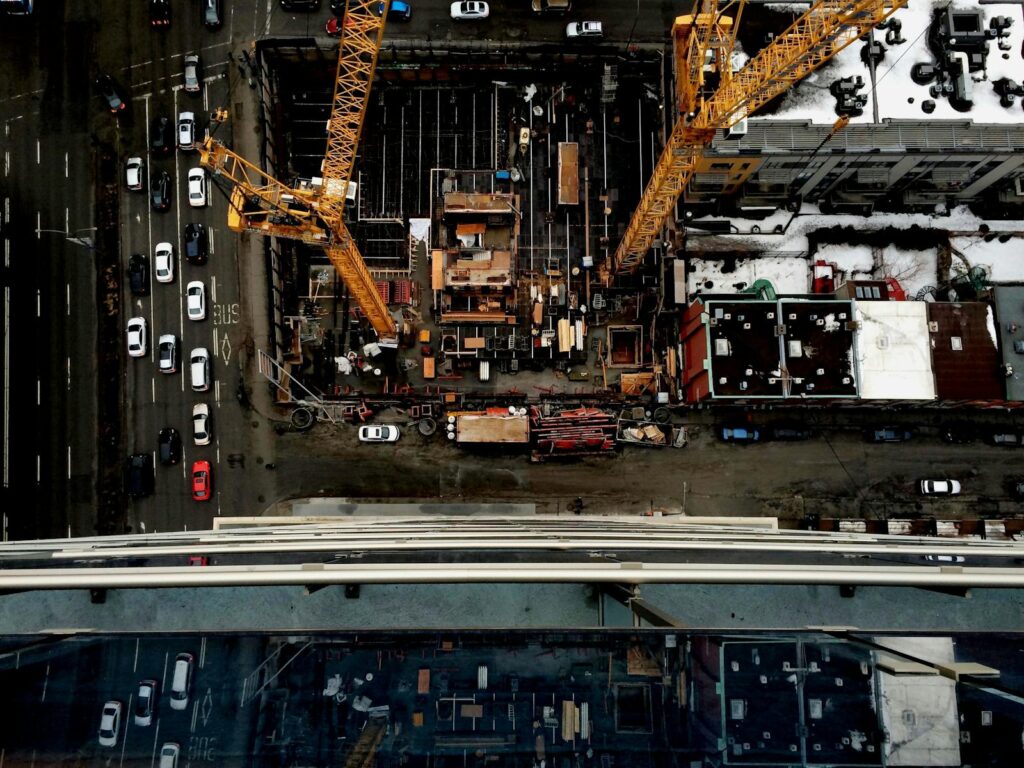
Photo by Margo White on Pexels
The Role of Technology in Modern Design-Build Projects
Technology has become a cornerstone of the modern commercial construction process, empowering project teams to deliver higher quality results with greater efficiency. Tools like Building Information Modeling (BIM) allow architects, engineers, and contractors to collaborate on a shared digital model of the building, streamlining communication and minimizing costly errors.
This integrated approach enables the team to identify potential issues before construction begins, reducing the risk of delays and rework.
In addition to BIM, technologies such as virtual reality (VR) and augmented reality (AR) give clients the ability to experience their building project before a single brick is laid. These immersive tools help clients and contractors visualize the finished space, make informed decisions, and ensure that the final product aligns with their expectations.
By embracing these innovations, the project team can enhance the quality and efficiency of the construction project, improve coordination among contractors, and deliver a superior experience for clients. The result is a smoother commercial construction process, where technology bridges the gap between concept and completion.
Sustainability Considerations in Commercial Construction
Sustainability is now a central focus in the development and planning phase of any commercial construction project.
As businesses and building owners seek to minimize their environmental impact, the project team plays a vital role in integrating sustainable practices from the earliest stages of planning. This can include selecting energy-efficient systems, incorporating recycled or locally sourced materials, and designing for long-term durability and adaptability.
During the planning phase, the construction team evaluates opportunities to reduce waste, optimize resource use, and implement green building strategies that benefit both the environment and the client’s bottom line. Sustainable design not only enhances the building’s performance but also contributes to healthier indoor environments for occupants.
By prioritizing sustainability throughout the project, from initial development to final construction, the team delivers commercial buildings that meet modern standards and support a more responsible future.
Safety Protocols: Protecting People and Projects
Safety is a non-negotiable priority in every commercial construction project, regardless of size or complexity. During the pre-construction phase, the construction team and construction manager develop comprehensive safety plans tailored to the specific needs of the job site.
These plans include detailed protocols, worker training programs, and regular safety inspections to ensure that every member of the team understands their responsibilities and the importance of maintaining a safe environment.
As the construction phase progresses, clear communication and incident reporting procedures are established to quickly address any safety concerns that arise. This proactive approach is especially critical in large-scale construction projects, where the number of workers and complexity of tasks can increase the risk of accidents. However, even small-scale construction projects benefit from diligent safety planning and oversight.
By making safety a core value throughout every phase of the project, the team protects both people and the project itself, reducing the risk of injuries, delays, and costly disruptions. This commitment to safety not only safeguards workers but also ensures the successful and timely completion of commercial construction projects.

Advantages of Design-Build with South Coast Improvement
South Coast Improvement’s design-build expertise delivers multiple benefits that traditional construction methods cannot match.
Single-Source Accountability
Single-source accountability means one point of contact throughout your project. Instead of managing separate relationships with architects, engineers, and builders, you work with one integrated team focused on your success.
Improved Communication
Improved communication flows naturally when designers and builders collaborate from day one. This teamwork prevents the miscommunications that plague traditional projects where design and construction operate in silos.
Reduced Stress
Reduced stress comes from knowing an experienced team handles all aspects of your project. You avoid the finger-pointing and blame-shifting common when problems arise between separate design and construction contracts.
Increased Efficiency
Increased efficiency results from overlapping design and construction activities. While architects finalize details in one area, builders can begin work in completed sections, compressing overall project timelines.
For example, design-build teams can efficiently expand a building by adding a new wing or an additional floor, minimizing disruption to ongoing operations and allowing the structure to grow in capacity.
The company’s Design-Build Institute of America recognition validates this approach, while their 90% repeat business rate demonstrates consistent client satisfaction.
Client Experience: Putting Developers First
Commercial real estate developers face unique pressures to deliver projects on time and within budget while meeting demanding quality standards. South Coast Improvement addresses these challenges through a client-centric approach that prioritizes understanding and meeting developer needs.
The company begins every project by thoroughly understanding business objectives, budget constraints, and timeline requirements. This foundation enables them to create custom solutions that deliver both immediate project success and long-term value.
Their team approach eliminates the adversarial relationships common in traditional construction. Instead of defending separate design and construction positions, the entire team works collaboratively toward shared project goals. This alignment reduces conflicts and keeps projects moving forward smoothly.
Transform Your Next Commercial Construction Project
Commercial construction success requires more than technical expertise—it demands strategic thinking, seamless coordination, and unwavering accountability. The design-build approach addresses these needs by creating unified teams focused on client success rather than protecting separate territorial interests.
South Coast Improvement’s proven track record, award-winning projects, and exceptional client retention demonstrate the power of integrated design-build services. Their approach reduces risk, accelerates timelines, and delivers superior outcomes for commercial real estate developers.
Your next commercial construction project deserves a partner who understands both the technical complexities and business realities of modern development. Contact South Coast Improvement to discover how their design-build expertise can transform your vision into a successful reality.
Resources to Learn More About Design-Build and Commercial Construction
- Design-Build Institute of America (DBIA) – Comprehensive resources, best practices, and industry news for design-build delivery methods.
- Associated General Contractors of America (AGC) – Educational materials, safety guidelines, and market insights for commercial construction professionals.
- American Institute of Architects (AIA) – Project Delivery Resources – Detailed guidance on project delivery methods, including design-build and integrated approaches.
- National Institute of Building Sciences (NIBS) – Research and tools for improving building performance, sustainability, and commercial construction processes.
- Construction Industry Institute (CII) – In-depth research reports and best practices for improving project delivery in commercial construction.
- U.S. General Services Administration – Design Excellence Program – Federal-level resources and guidelines for high-quality, innovative commercial building projects.
View Our Work
The Overlook – Masonic Health System
"We’re honored to have partnered with The Overlook on this transformative initiative. Our team brought specialized expertise in working within occupied senior living communities, delivering a seamless renovation that aligns with The Overlook’s exceptional standards of...
Hamilton Wenham
Their team was collaborative, responsive, and committed to our shared vision for this space, -Eric Tracy Superintendent, Hamilton-Wenham Regional School District We partnered with the Hamilton-Wenham Regional School District to deliver a brand-new athletic building...
